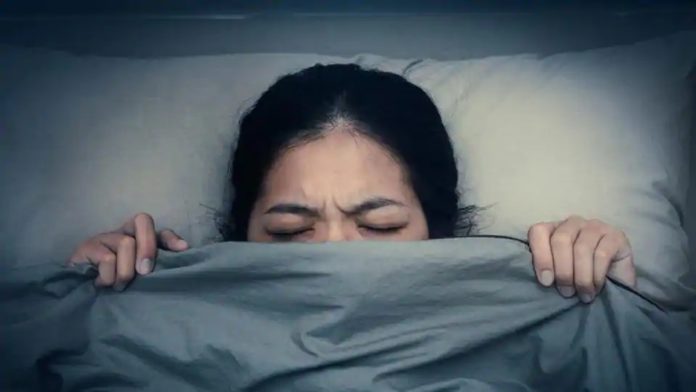According to a new study published today in the journal Frontiers in Psychology, more than half of all distressing dreams reported these days to involve the novel coronavirus.
Scientists used artificial intelligence to analyze dream content of close to a thousand people. They found that COVID-19 infects the majority of bad dreams.
For the study, scientists collected sleep and stress data from more than 4,000 people during the sixth week of the COVID-19 lockdown in Finland. About 800 respondents also contributed information about their dreams during that time – many of which revealed shared anxiety about the pandemic.
Lead author Dr. Anu-Katriina Pesonen, head of the Sleep & Mind Research Group at the University of Helsinki, said, “We were thrilled to observe repeating dream content associations across individuals that reflected the apocalyptic ambiance of COVID-19 lockdown. The results allowed us to speculate that dreaming in extreme circumstances reveals shared visual imagery and memory traces. In this way, dreams can indicate some form of shared mindscape across individuals.”
“The idea of shared imagery reflected in dreams is intriguing.”
After that, scientists transcribed the content of Finnish’s dreams into English word lists and fed the data into an AI algorithm, which scanned for frequently appearing word associations. The computer built the dream clusters from the “smaller dream particles” rather than entire dreams.”
Eventually, 33 dream clusters or themes emerged. Twenty of the dream clusters were classified as bad dreams, and 55 percent had pandemic-specific content. Themes such as social distancing failures, coronavirus contagion, personal protective equipment, dystopia, and apocalypse were rated as pandemic specific.
For example, word pairs in a dream cluster labeled “Disregard of Distancing” included mistake-hug, hug-handshake, handshake-restriction, handshake-distancing, distancing-disregard, distancing-crowd, crowd-restriction, and crowd-party.
Pesonen said, “The computational linguistics-based, AI-assisted analytics that we used is a novel approach in dream research. We hope to see more AI-assisted dream research in the future. We hope that our study opened development in that direction.”
The study also offered some insights into people’s sleep patterns and stress levels during the pandemic lockdown. For instance, more than half of respondents reported sleeping more than before the period of self-quarantine. However, 10 percent had a more challenging time falling asleep, and more than a quarter reported more frequent nightmares.
Journal Reference:
- Anu-Katriina Pesonen et al. Pandemic Dreams: Network Analysis of Dream Content During the COVID-19 Lockdown. DOI: 10.3389/fpsyg.2020.573961
